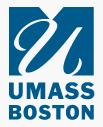Home > CIEE > Vol. 3 > Iss. 1 (2016)
Abstract
In January 2014, we participated in a connectivist-style massive open online course (cMOOC) called "Rhizomatic Learning – The community is the curriculum" (#rhizo14). In rhizomatic learning, teacher and student roles are radically restructured. Course content and value come mostly from students; the teacher, at most, is a curator who provides a starting point and guidance and sometimes participates as a learner. Early on, we felt that we were in a unique learning experience that we wanted to capture in writing. Explaining #rhizo14 to others without the benefit of traditional processes, practices, roles, or structures, however, presented a challenge. We invited participants to contribute narratives to a collaborative autoethnography (CAE), which comprises an assortment of collaborative Google Docs, blog posts by individuals, and comments on those documents and posts. This strategy afforded insight into what many participants found to be a most engaging course and what for some was a transformative experience. In discussing the findings from the CAE, our intent is to benefit others interested in rhizomatic learning spaces such as cMOOCs. This authoethnography specifically addresses gaps both in the understanding of the learner experience in cMOOCs and in the nature of rhizomatic learning.
Keywords
rhizomatic learning, MOOC, cMOOC, connectivism, rMOOC
Recommended Citation
Bali, Maha; Honeychurch, Sarah; Hamon, Keith; Hogue, Rebecca J.; Koutropoulos, Apostolos; Johnson, Scott; Leunissen, Ronald; and Singh, Lenandlar
(2016)
"What is it Like to Learn and Participate in Rhizomatic MOOCs? A Collaborative Autoethnography of #RHIZO14,"
Current Issues in Emerging eLearning: Vol. 3:
Iss.
1, Article 4.
Available at:
https://scholarworks.umb.edu/ciee/vol3/iss1/4
